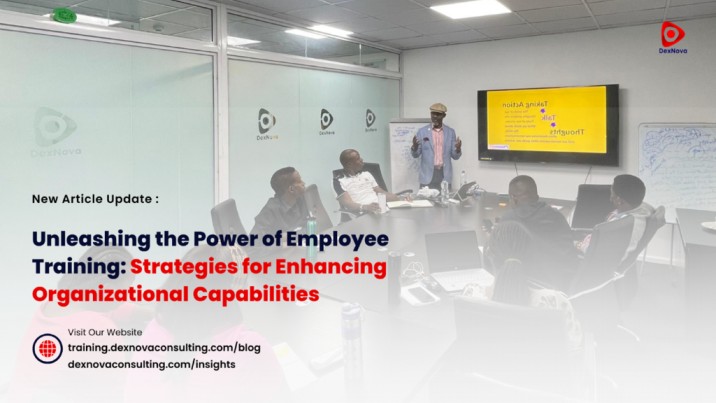Unleashing the Power of Employee Training: Strategies for Enhancing Organizational Capabilities
Introduction
Employee training is critical in today’s fast-paced, ever-changing business environment. As firms attempt to remain competitive and innovative, investing in worker development has become a vital success strategy. Employee training can provide individuals with essential skills and information while improving organizational capabilities.
Building a Knowledgeable Workforce
Effective training programs are essential for developing an informed and qualified workforce. Organizations encourage people to flourish in their roles and contribute significantly to the company’s goals by providing chances for learning and growth. Whether learning new technology, improving interpersonal skills, or knowing industry best practices, continual training ensures that staff stays relevant and flexible in a fast-changing environment.
Fostering Innovation and Creativity
Employee training is also essential in promoting corporate innovation and creativity. Employees who are encouraged to explore new ideas, experiment with different methods, and constantly improve their abilities become innovative catalysts. Training programs promote creative thinking and problem-solving, enabling employees to approach difficulties from new angles and promoting corporate growth and competitiveness.
Enhancing Employee Engagement and Retention
Investing in staff training shows a commitment toward professional development, resulting in better employee retention and engagement. Employees who feel valued and encouraged through training opportunities are more likely to be motivated and loyal to their employers. Furthermore, continued training can foster a culture of continuous learning, encouraging employees to participate in their growth and development, resulting in increased job satisfaction and lower turnover rates.
Improving Organizational Performance
Businesses that prioritize employee training frequently see increases in output and general performance. Employees with proper training can better carry out their duties quickly and effectively, producing higher-quality work and happier clients. Programs for improving cooperation and teamwork may fortify internal procedures and workflows, increasing organizational performance even more.
Strategies for Success
To fully leverage the power of employee training, organizations should adopt strategic approaches that align with their goals and objectives:
- Identify Training Needs: Conduct thorough assessments to identify the organization’s skills and knowledge gaps. This will ensure that training programs are tailored to address the most critical areas for improvement.
- Offer Diverse Learning Opportunities: To meet the needs of various learning styles and preferences, provide a range of training approaches, such as workshops, seminars, online courses, and on-the-job training.
- Encourage Continuous Learning: Foster a continuous learning and professional development culture by providing ongoing training opportunities and incentivizing employees to pursue further education and certifications.
- Measure and Evaluate: Establish metrics and key performance indicators (KPIs) to evaluate the training program’s effectiveness and make data-driven decisions for continuous improvement.
- Promote Knowledge Sharing: Encourage staff to share their knowledge and best practices with their coworkers, generating a collaborative learning environment that benefits the entire organization.
Conclusion
In today’s dynamic business environment, the power of employee training extends far beyond individual skill development. By investing in our training programs prioritizing knowledge, innovation, and engagement, organizations can enhance their capabilities, drive performance, and position themselves for long-term success. As the workforce continues to evolve, organizations embracing a learning and development culture will undoubtedly emerge as leaders in their respective industries.



